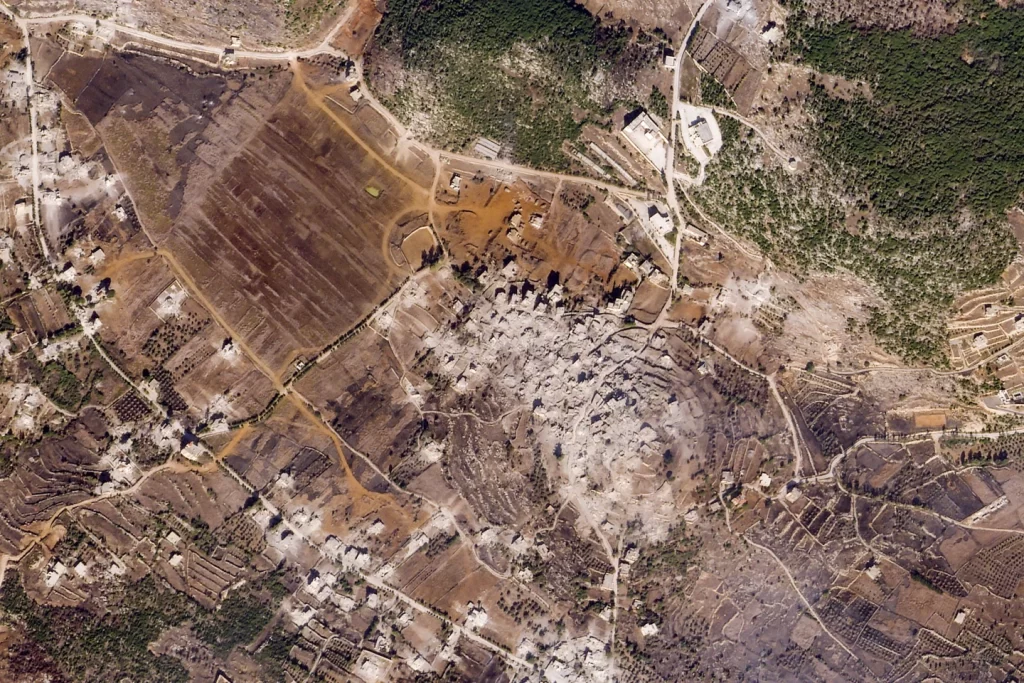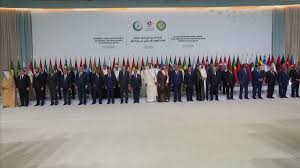
BEIRUT — Perched on a hilltop a short walk from the Israeli border, the tiny southern Lebanese village of Ramyah has almost been wiped off the map. In a neighboring village, satellite photos show a similar scene: a hill once covered with houses, now reduced to a gray smear of rubble.
Israeli warplanes and ground forces have blasted a trail of destruction through southern Lebanon the past month. The aim, Israel says, is to debilitate the Hezbollah militant group, push it away from the border and end more than a year of Hezbollah fire into northern Israel.
Even United Nations peacekeepers and Lebanese troops in the south have come under fire from Israeli forces, raising questions over whether they can remain in place.
More than 1 million people have fled bombardment, emptying much of the south. Some experts say Israel may be aiming to create a depopulated buffer zone, a strategy it has already deployed along its border with Gaza.
Some conditions for such a zone appear already in place, according to an Associated Press analysis of satellite imagery and data collected by mapping experts that show the breadth of destruction across 11 villages next to the border.
The Israeli military has said the bombardment is necessary to destroy Hezbollah tunnels and other infrastructure it says the group embedded within towns. The blasts have also destroyed homes, neighborhoods and sometimes entire villages, where families have lived for generations.
Israel says it aims to push Hezbollah far enough back that its citizens can return safely to homes in the north, but Israeli officials acknowledge they don’t have a concrete plan for ensuring Hezbollah stays away from the border long term. That is a key focus in attempts by the United States to broker a cease-fire.
Orna Mizrahi, a senior researcher at Israel’s Institute for National Security Studies, said Israel’s immediate aim is not to create a buffer zone — but that might change.
“Maybe we’ll have no other choice than staying there until we have an arrangement that promises us that Hezbollah will not come back to the zone,” she said.
A path of destruction
Troops pushed into southern Lebanon on Oct. 1, backed by heavy bombardment that has intensified since.
Using satellite images provided by Planet Labs PBC, AP identified a line of 11 villages — all within 4 miles (6.5 kilometers) of Lebanon’s border with Israel — that have been severely damaged in the past month, either by strikes or detonations of explosives laid by Israeli soldiers.
Analysis found the most intense damage in the south came in villages closest to the border, with between 100 and 500 buildings likely destroyed or damaged in each, according to Corey Scher of CUNY Graduate Center and Jamon Van Der Hoek of Oregon State University, experts in damage assessments.
In Ramyah, barely a single structure still stands on the village’s central hilltop, after a controlled detonation that Israeli soldiers showed themselves carrying out in videos posted on social media. In the next town over, Aita al-Shaab — a village with strong Hezbollah influence — bombardment turned the hilltop with the highest concentration of buildings into a gray wasteland of rubble.
In other villages, the damage is more selective. In some, bombardment tore scars through blocks of houses; in others, certain homes were crushed while their neighbors remained intact.
Another controlled detonation leveled much of the village of Odeissah, with an explosion so strong it set off earthquake alerts in Israel.
In videos of the blast, Lubnan Baalbaki, conductor of the Lebanese Philharmonic Orchestra, watched in disbelief as his parents’ house — containing the art collection and a library his father had built up for years — was destroyed.
“This house was a project and a dream for both of my parents,” he told the AP. His parents’ graves in the garden are now lost.
When asked whether its intention was to create a buffer zone, Israel’s military said it was “conducting localized, limited, targeted raids based on precise intelligence” against Hezbollah targets. It said Hezbollah had “deliberately embedded” weapons in homes and villages.




